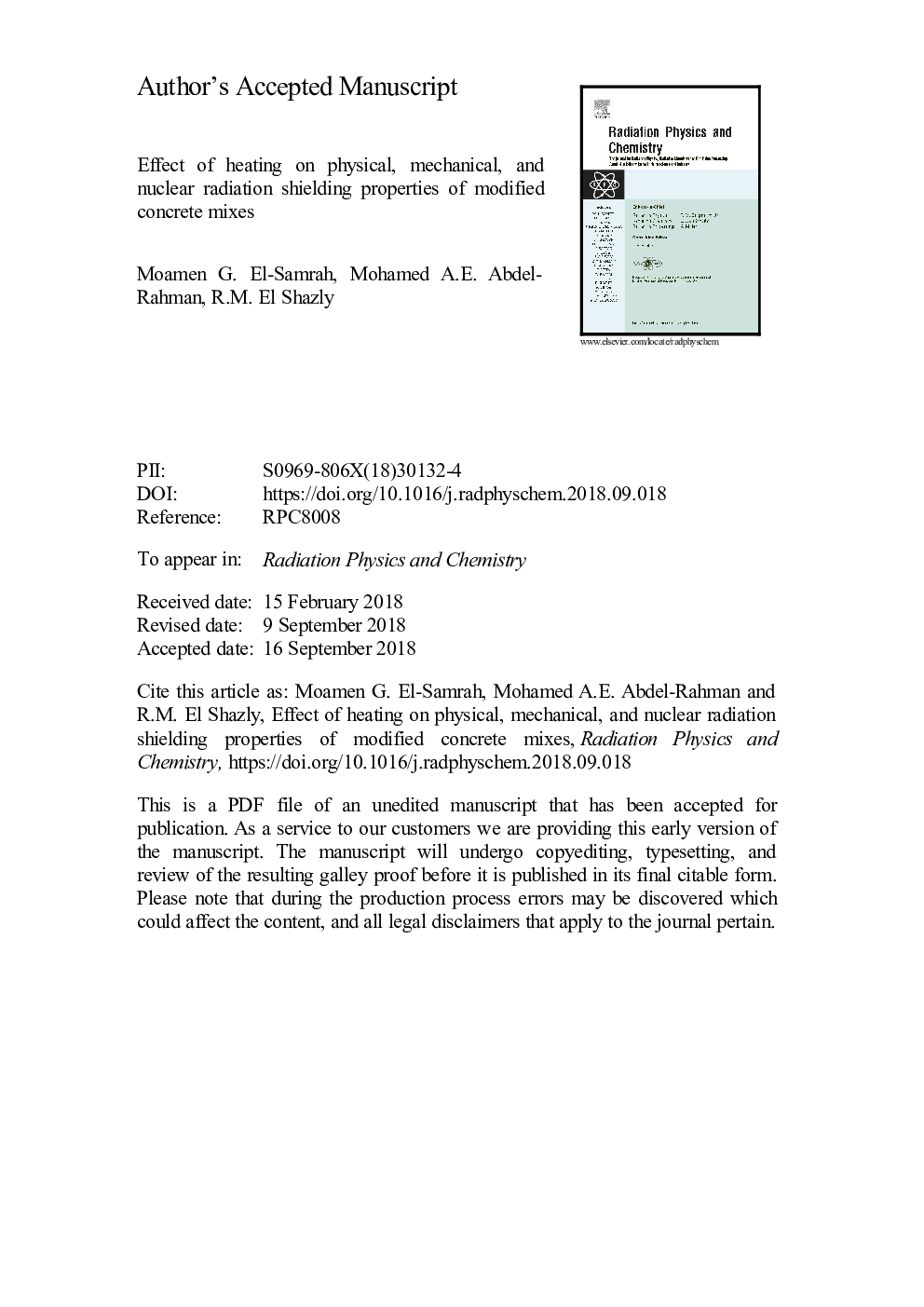| Article ID | Journal | Published Year | Pages | File Type |
|---|---|---|---|---|
| 11029438 | Radiation Physics and Chemistry | 2018 | 14 Pages |
Abstract
Four concrete mixes, goethite-limonite concrete (G.L), barite-limonite concrete (B.L), steel slag-limonite concrete (S.L), and dolomite concrete (D.C) were prepared and designed to investigate the influence of heating (25, 100, 200, and 450â¯Â°C) on their performance as nuclear radiation shielding barriers. Slabs of different thicknesses from the investigated concrete mixes were exposed to a collimated beam of fast neutrons emitted from 252Cf like fission spectrum, with activity of 1.05â¯mCi. Measurements of the attenuation properties of fast neutrons as well as total, primary and secondary, gamma rays were performed. Organic scintillation detector with stilbene crystal was used to detect fast neutrons and total gamma-rays intensities. Results show that G.L concrete has the highest value of total removal macroscopic cross-section, Σ, for samples exposed to temperature up to 200â¯Â°C. However, for samples heated at 450â¯Â°C, G.L concrete has the poorest attenuation for fast neutrons. On the other hand, for total gamma rays, as temperature raising up to 450â¯Â°C, the B.L. concrete mix has the highest value of total linear attenuation coefficients (μ). Nevertheless; at 450â¯Â°C the S.L. concrete mix has almost the same value of μ as that of B.L.
Keywords
Related Topics
Physical Sciences and Engineering
Physics and Astronomy
Radiation
Authors
Moamen G. El-Samrah, Mohamed A.E. Abdel-Rahman, R.M. El Shazly,
